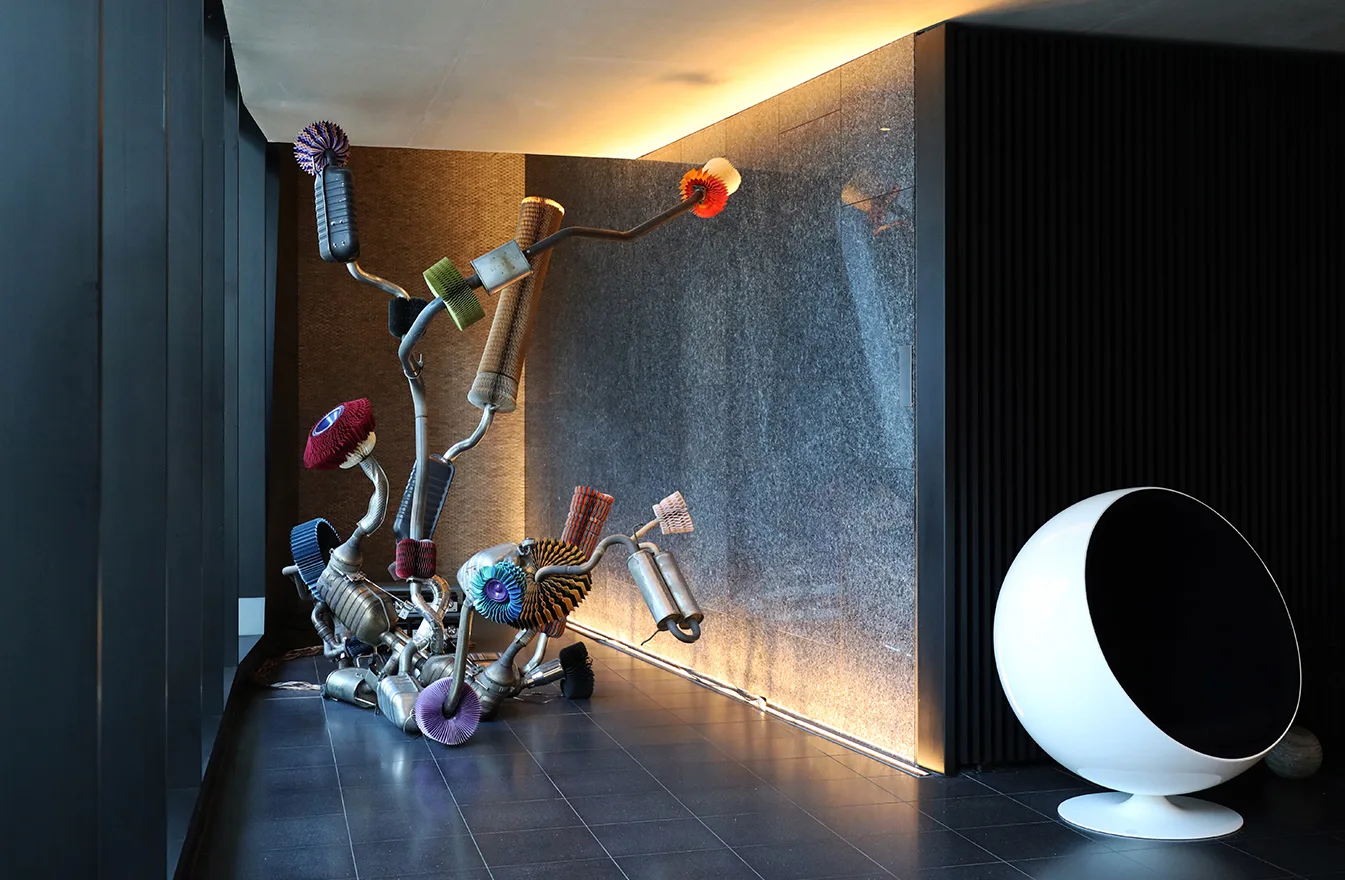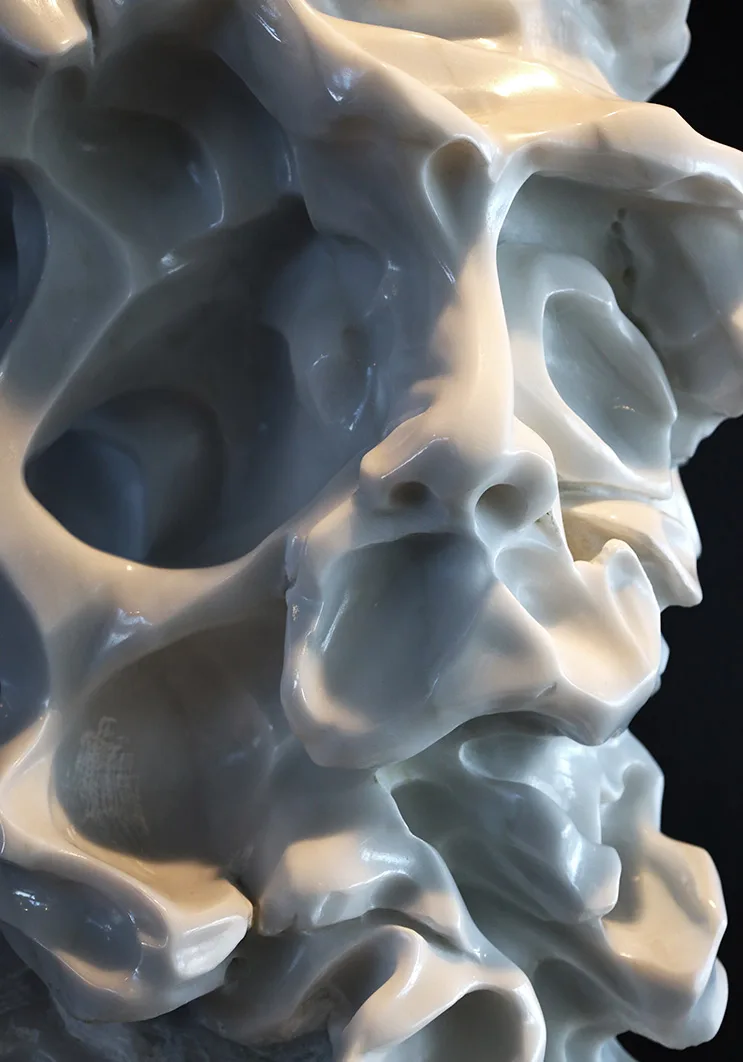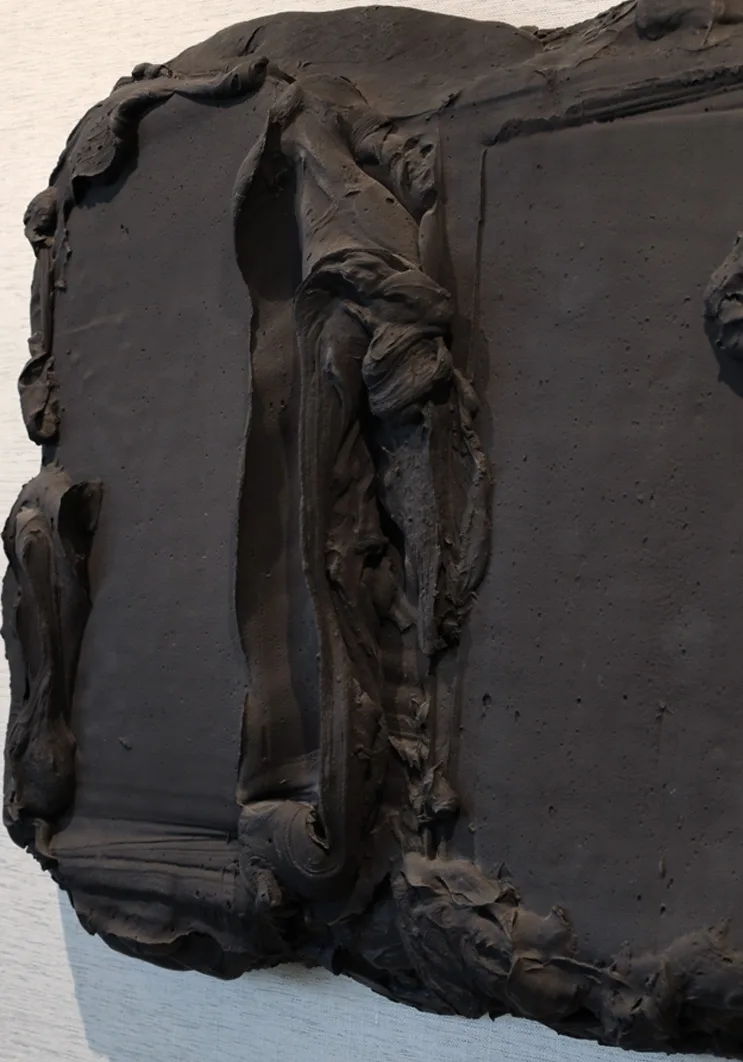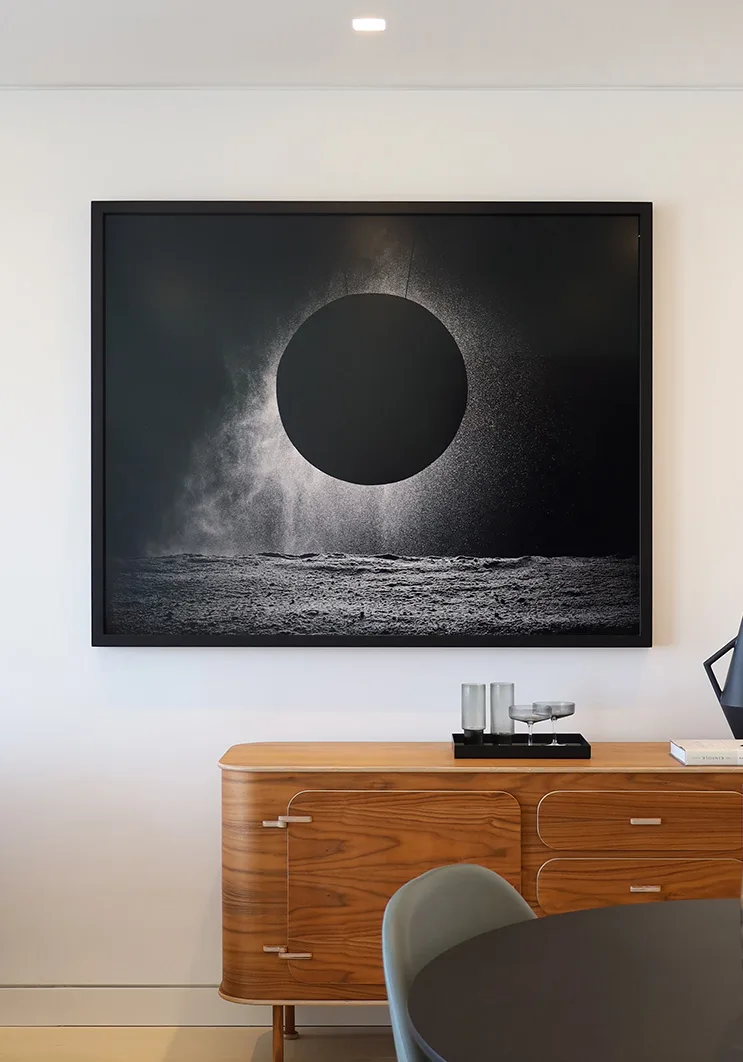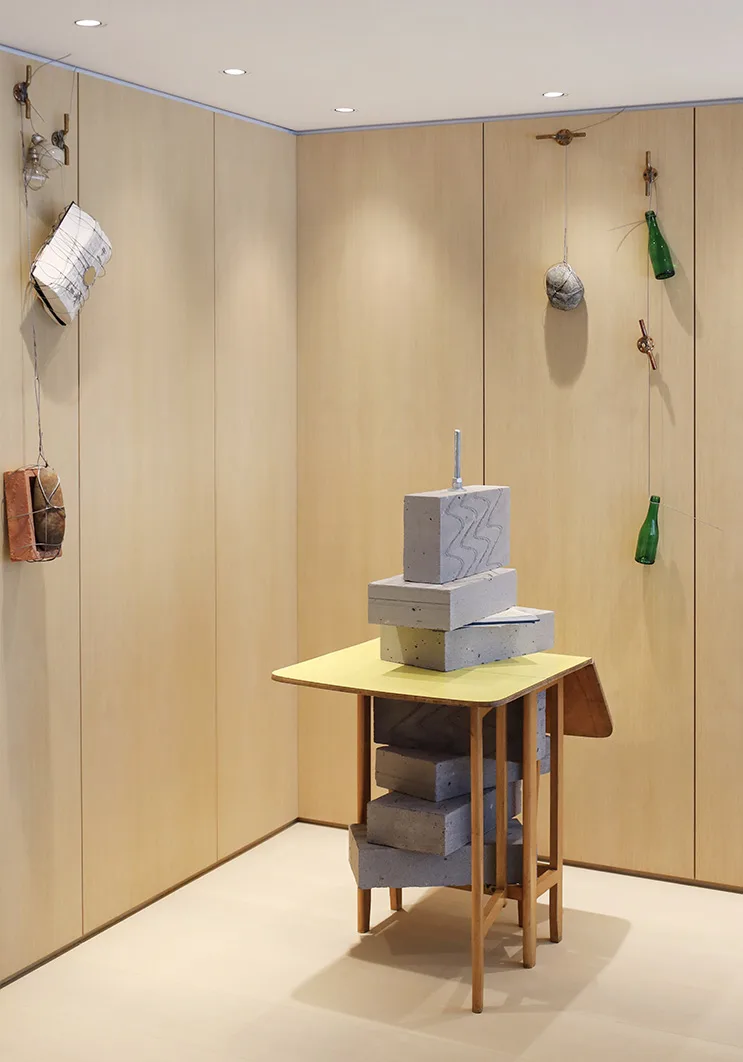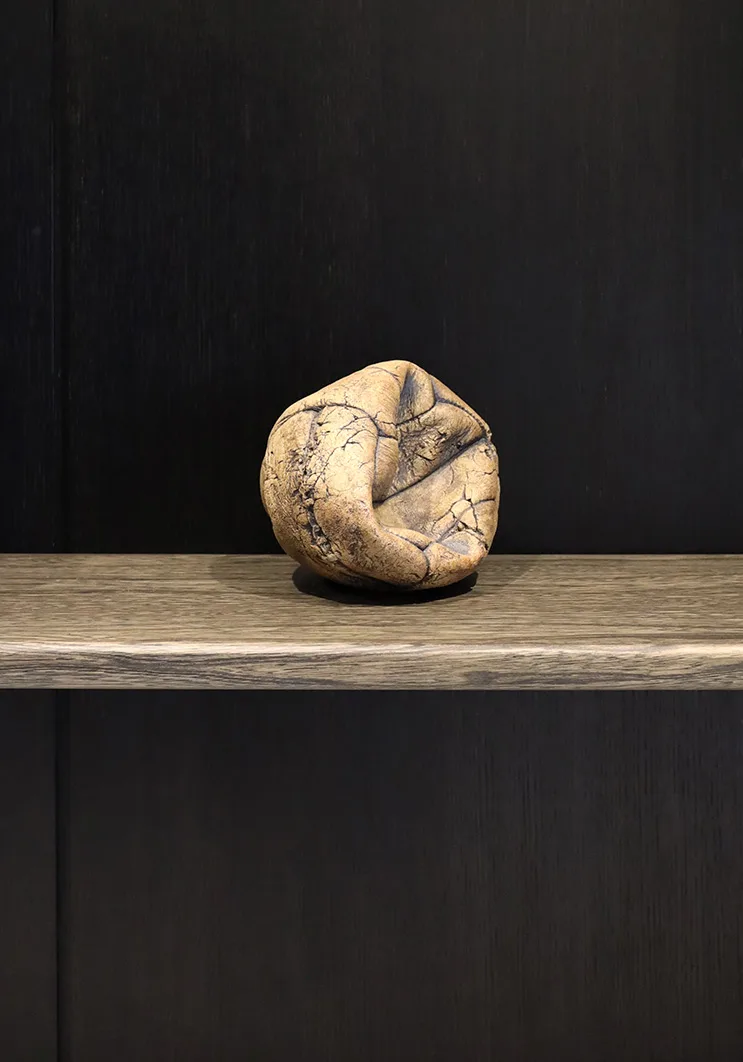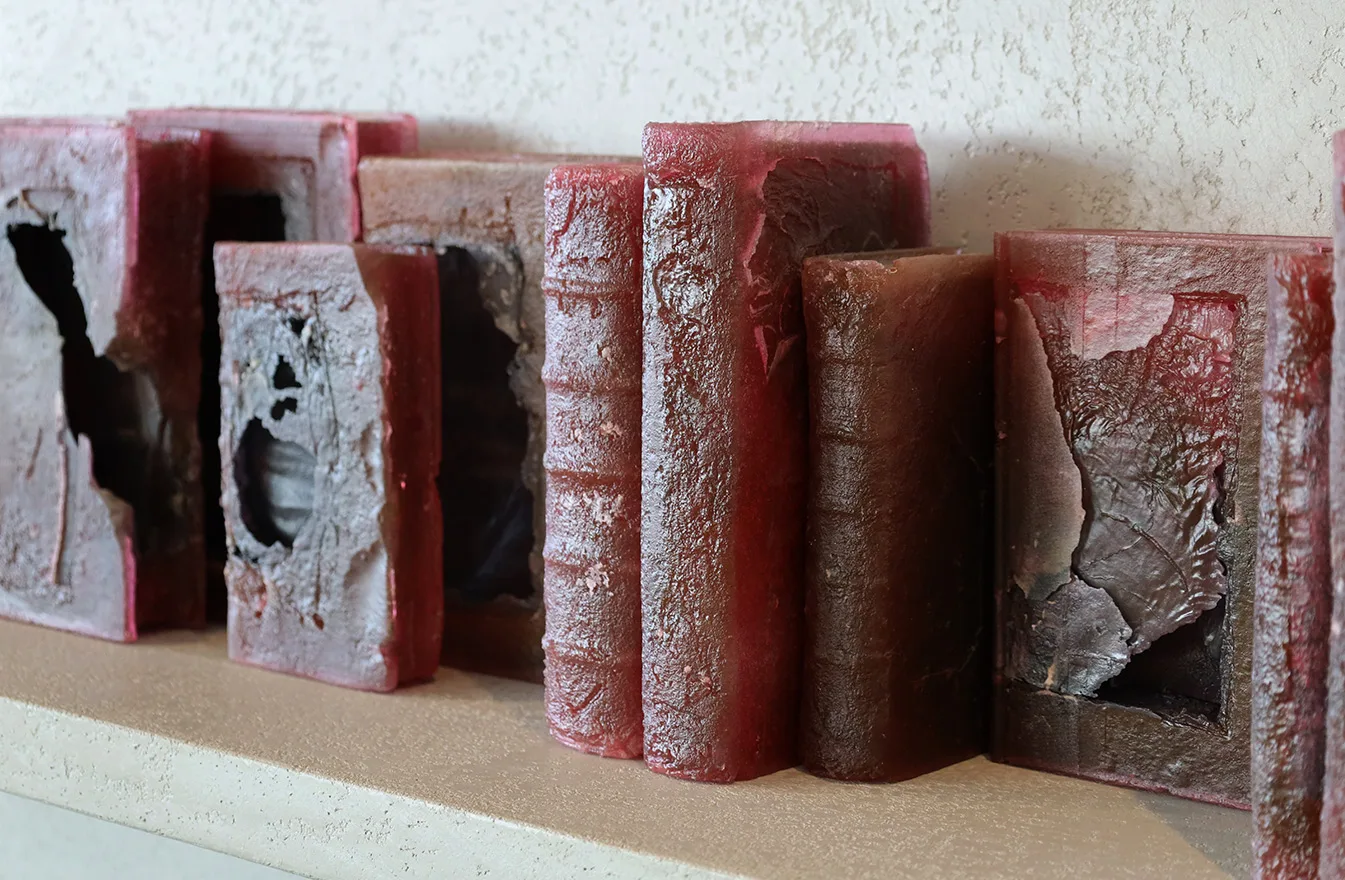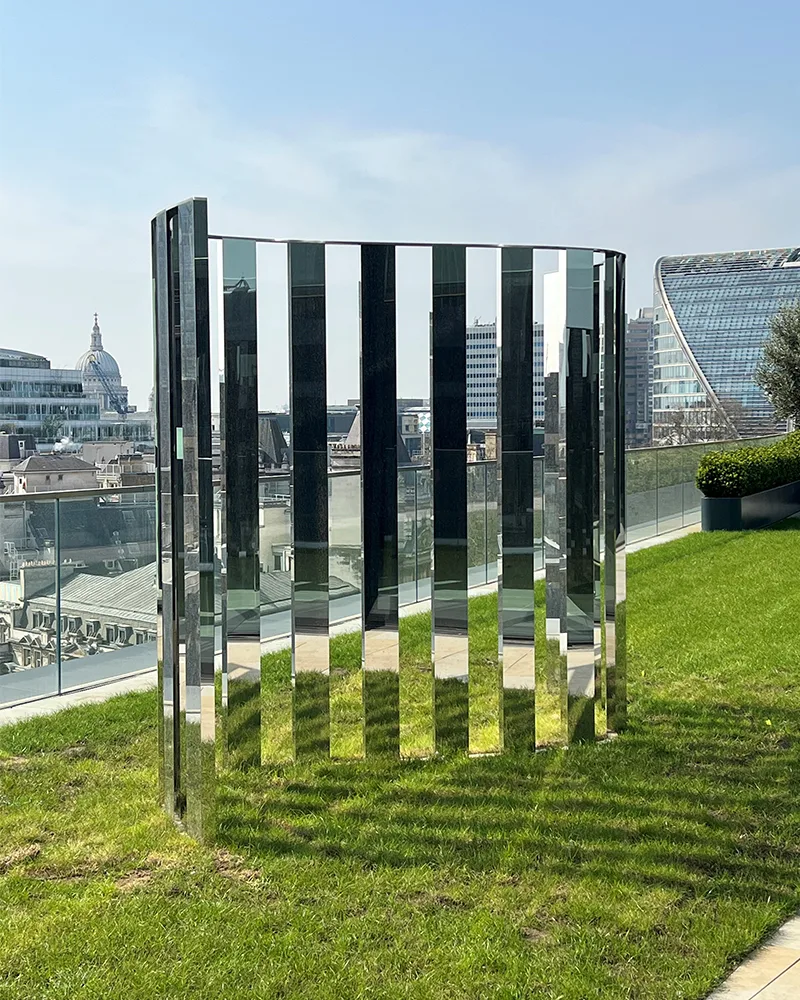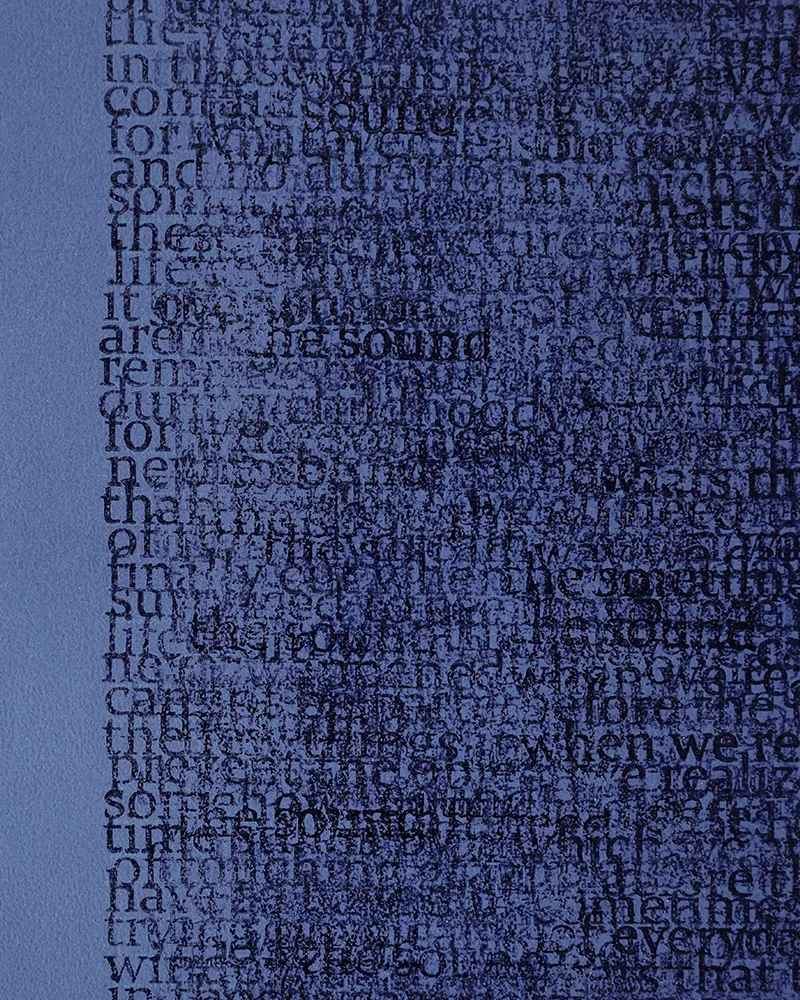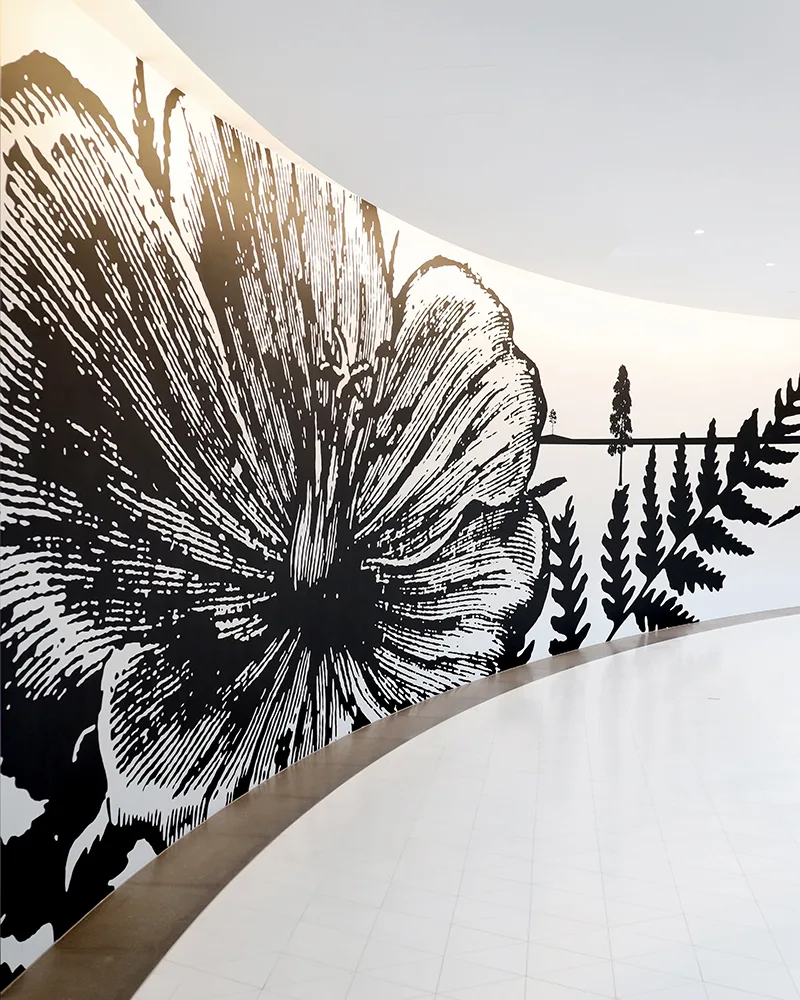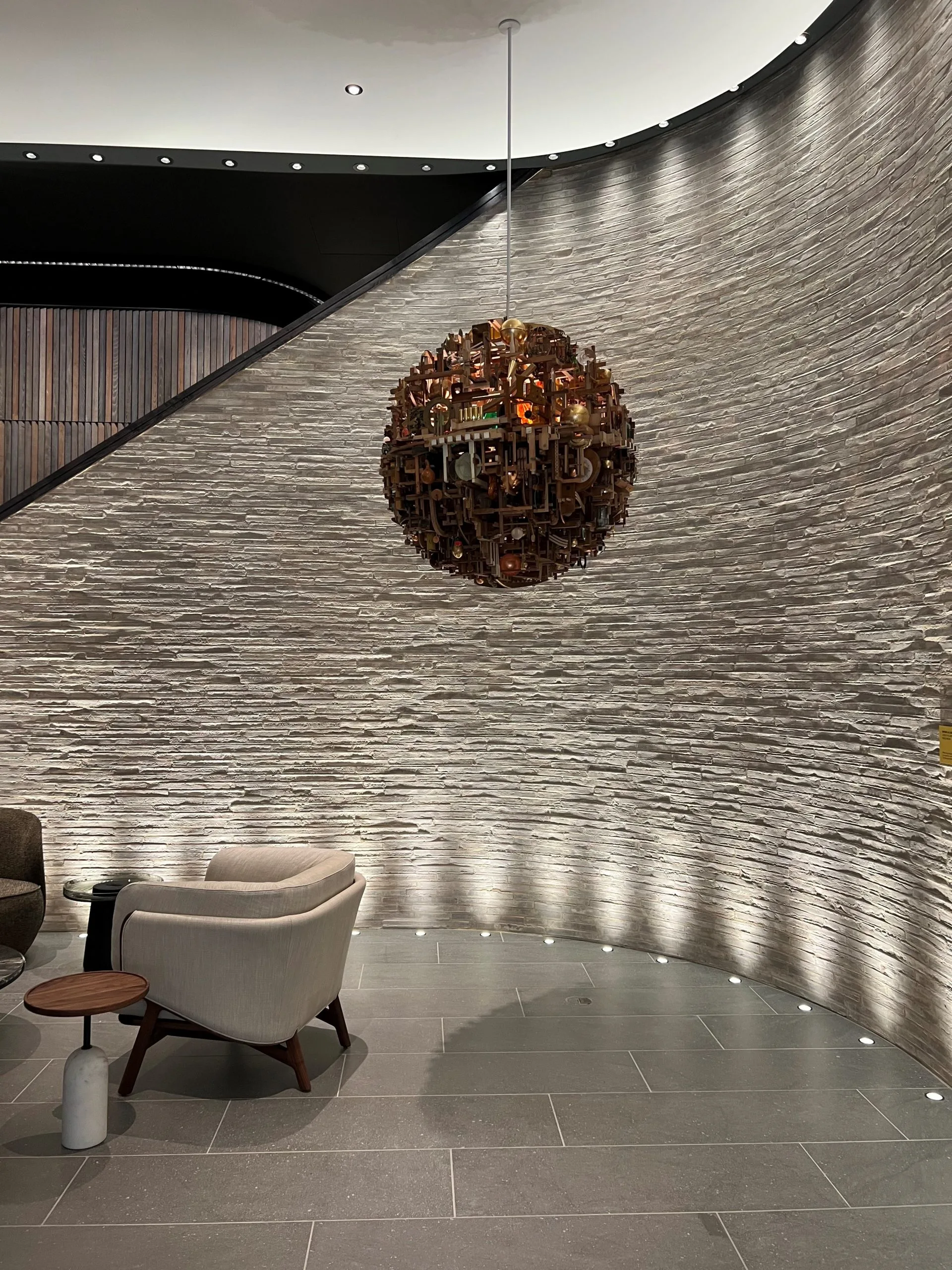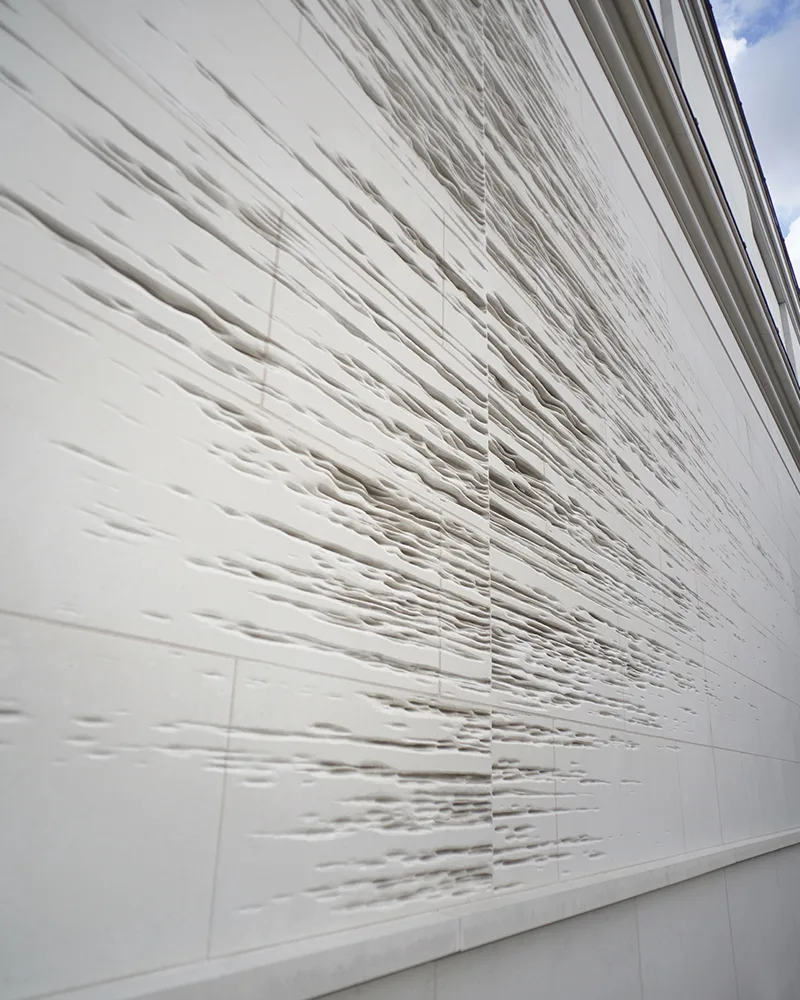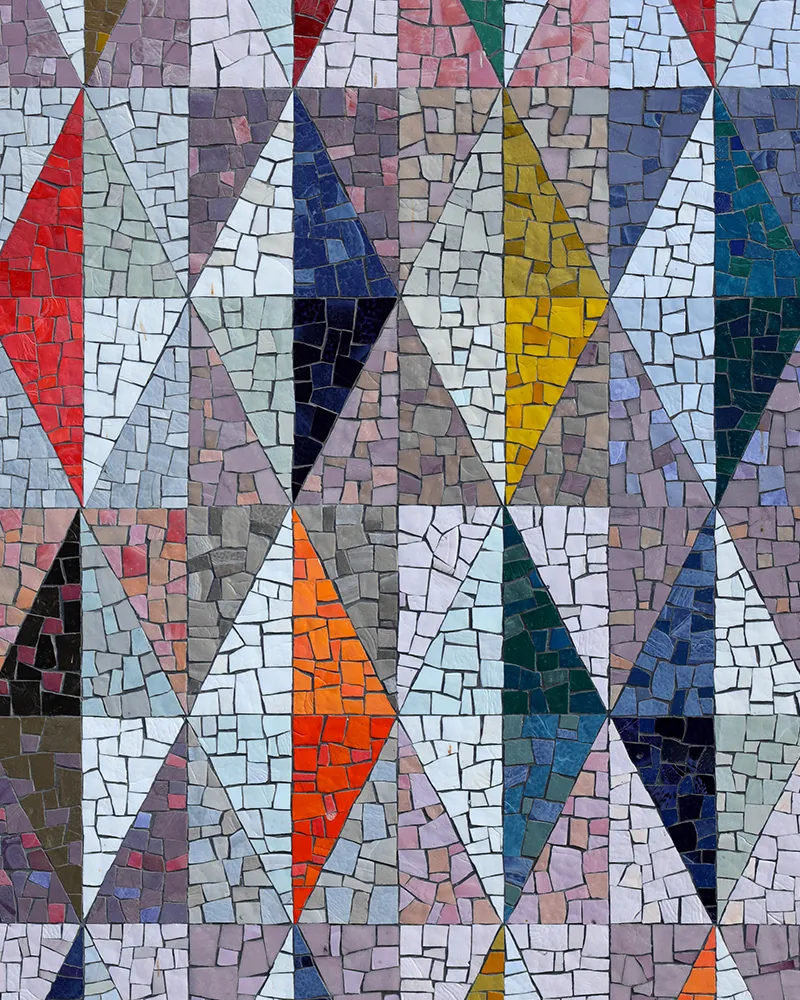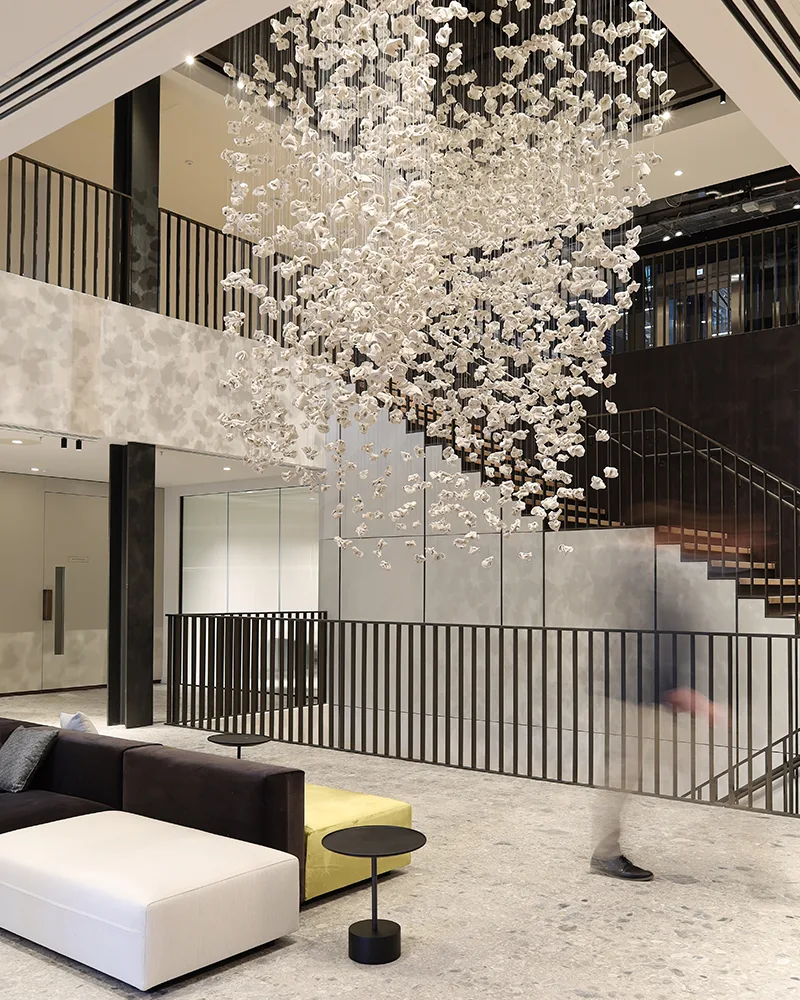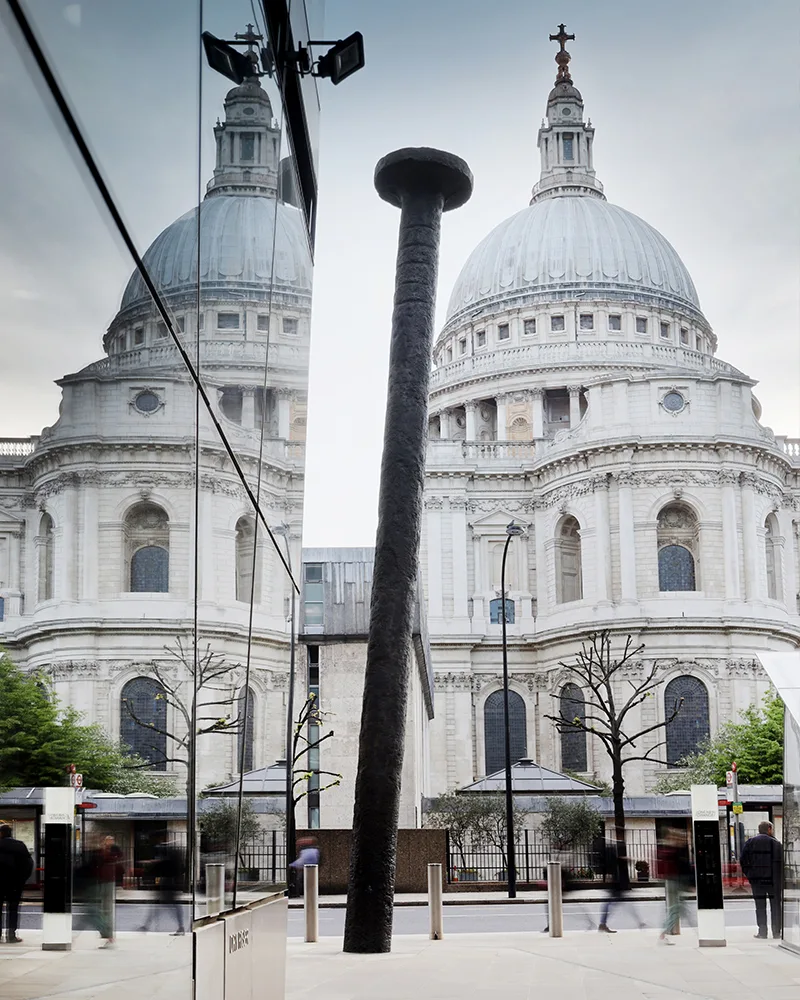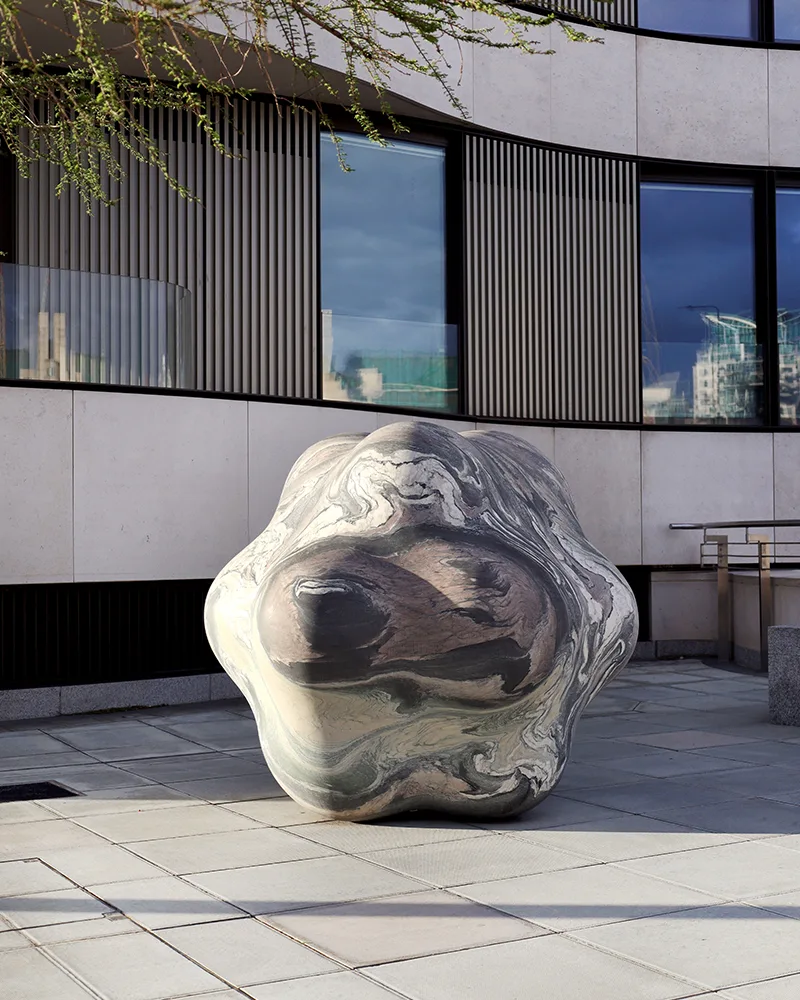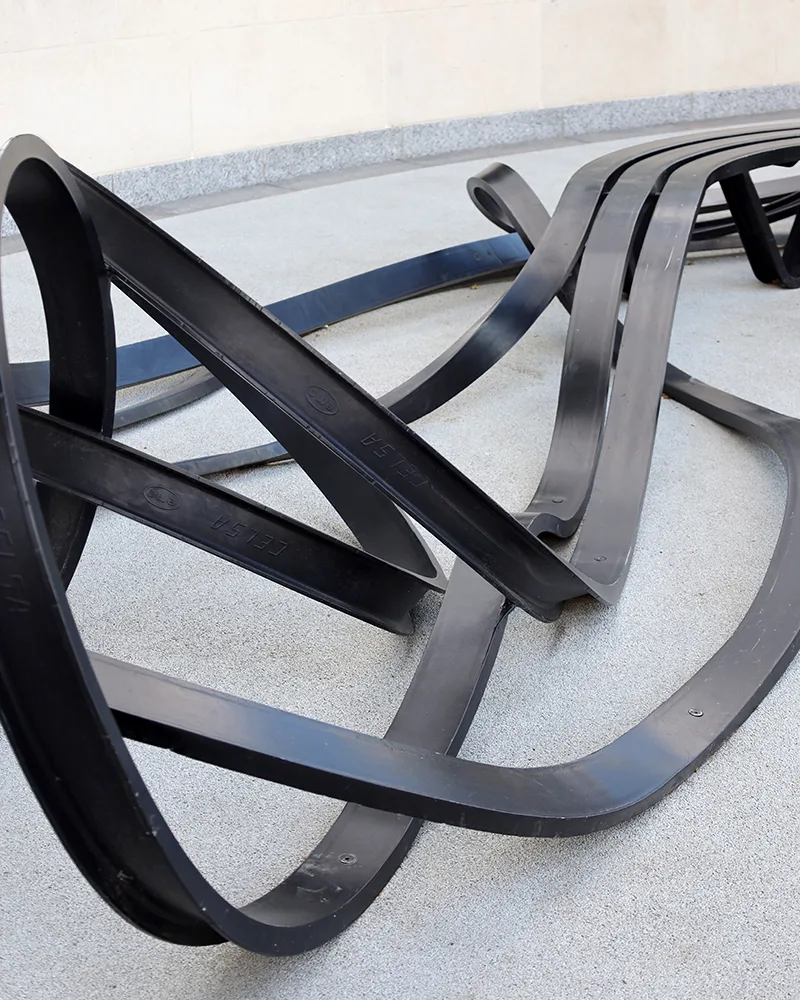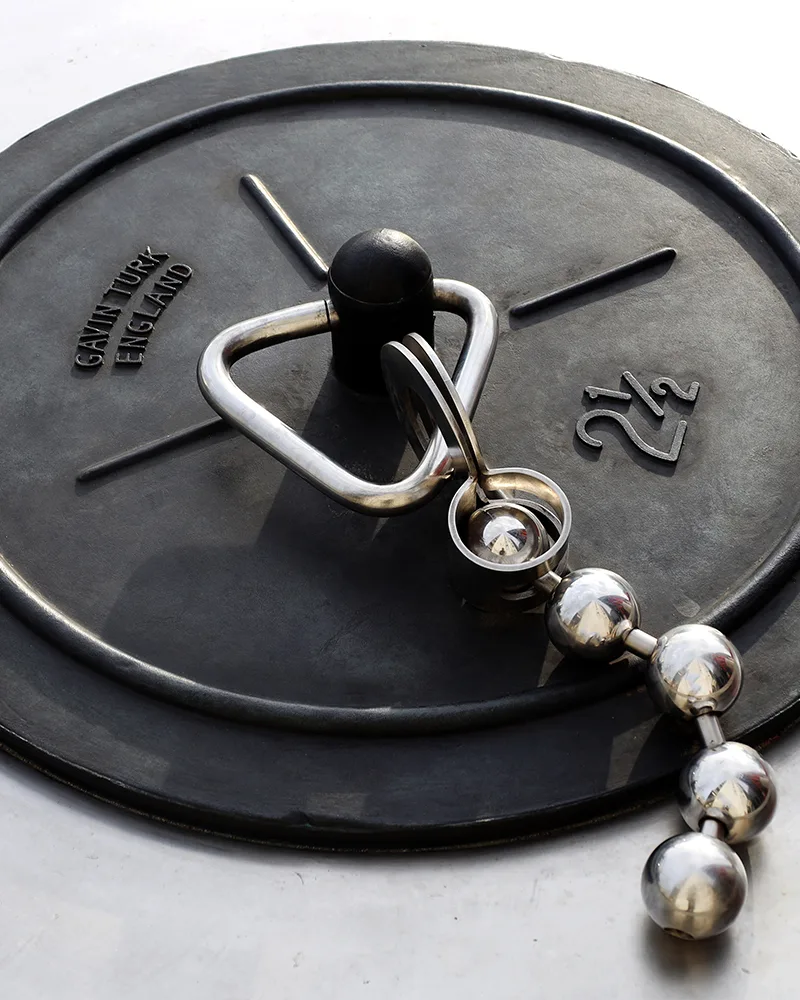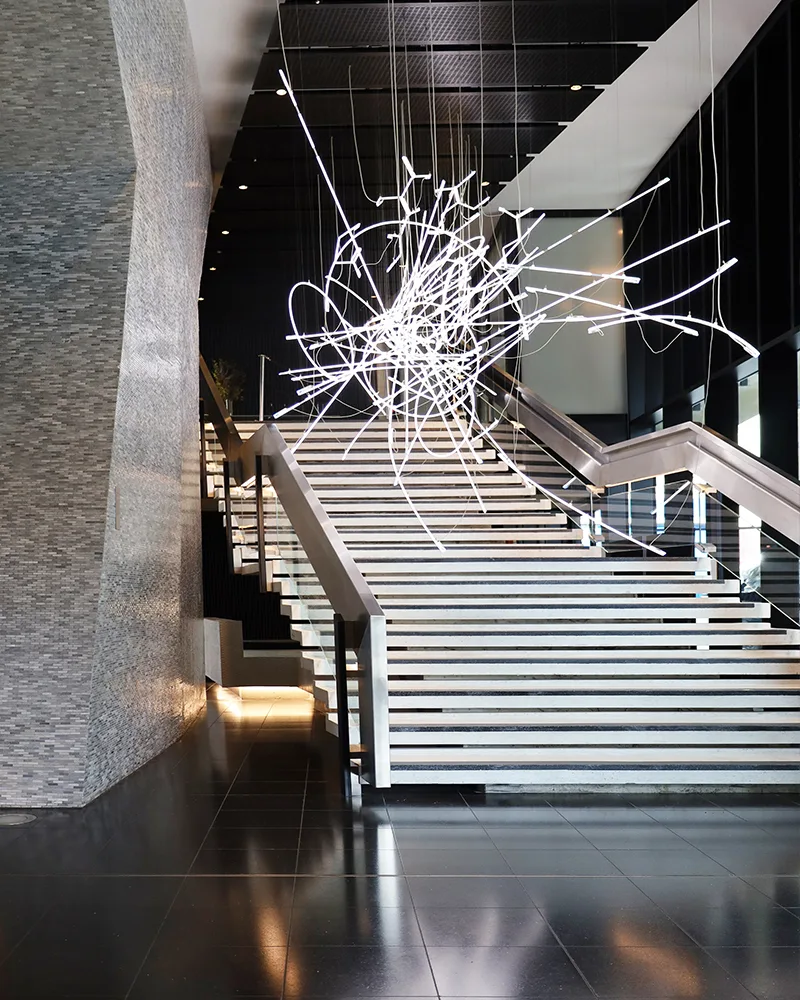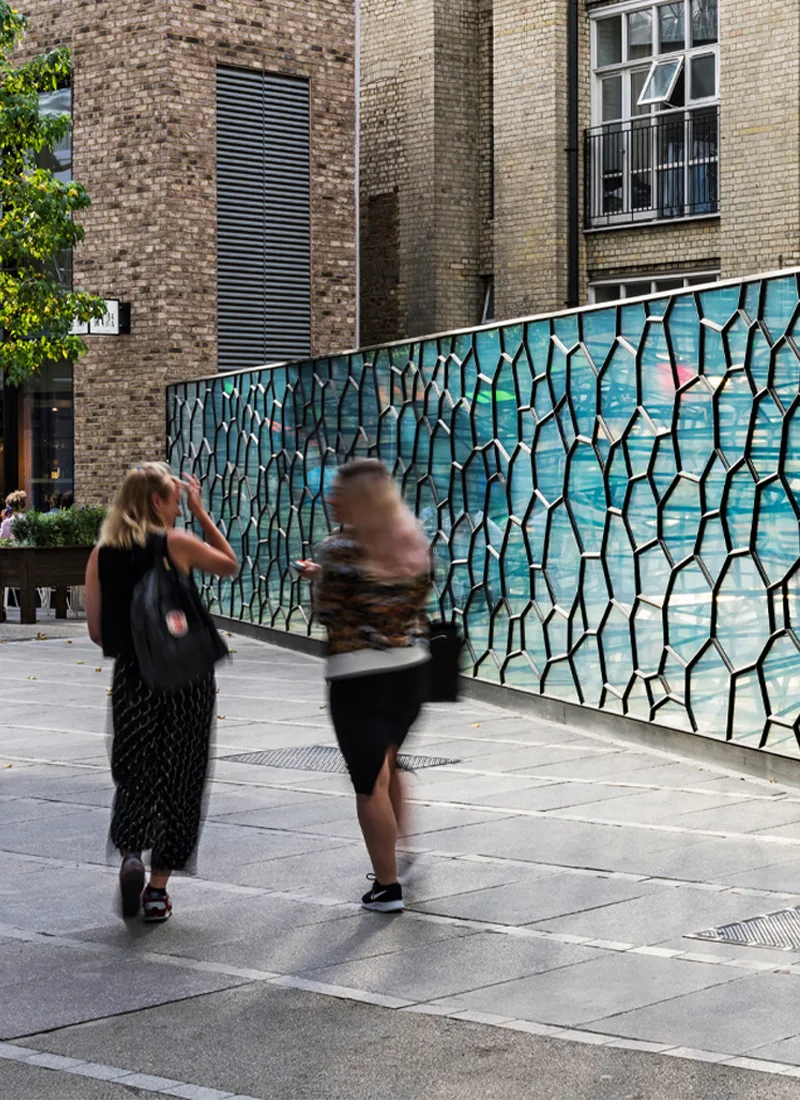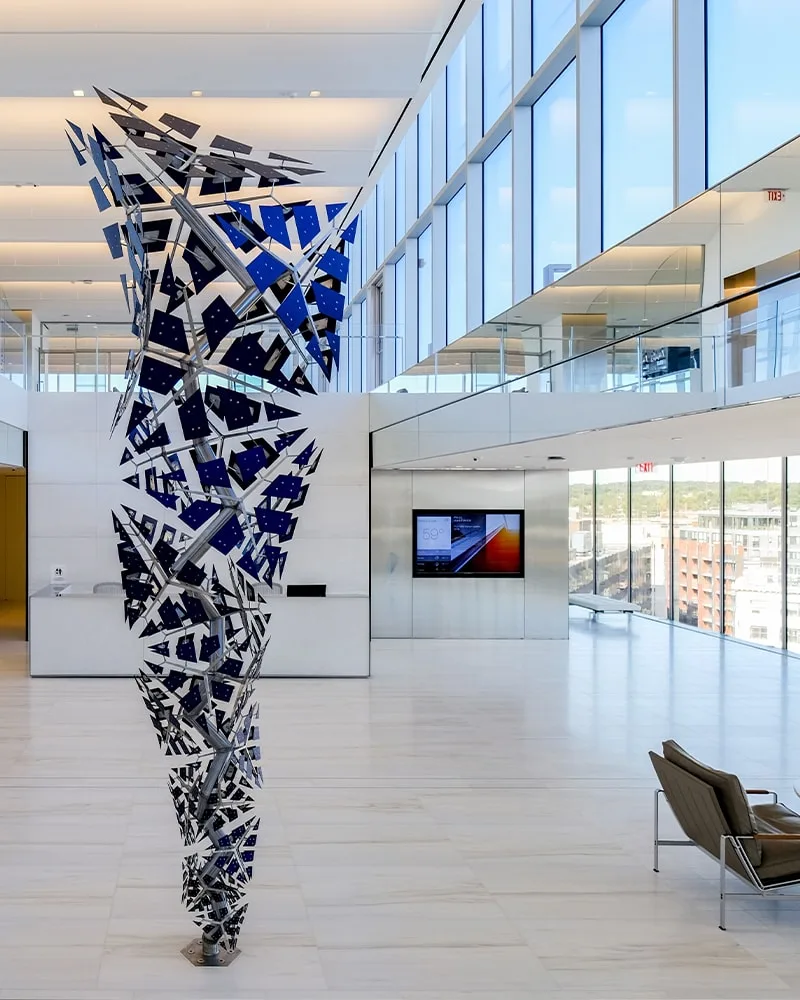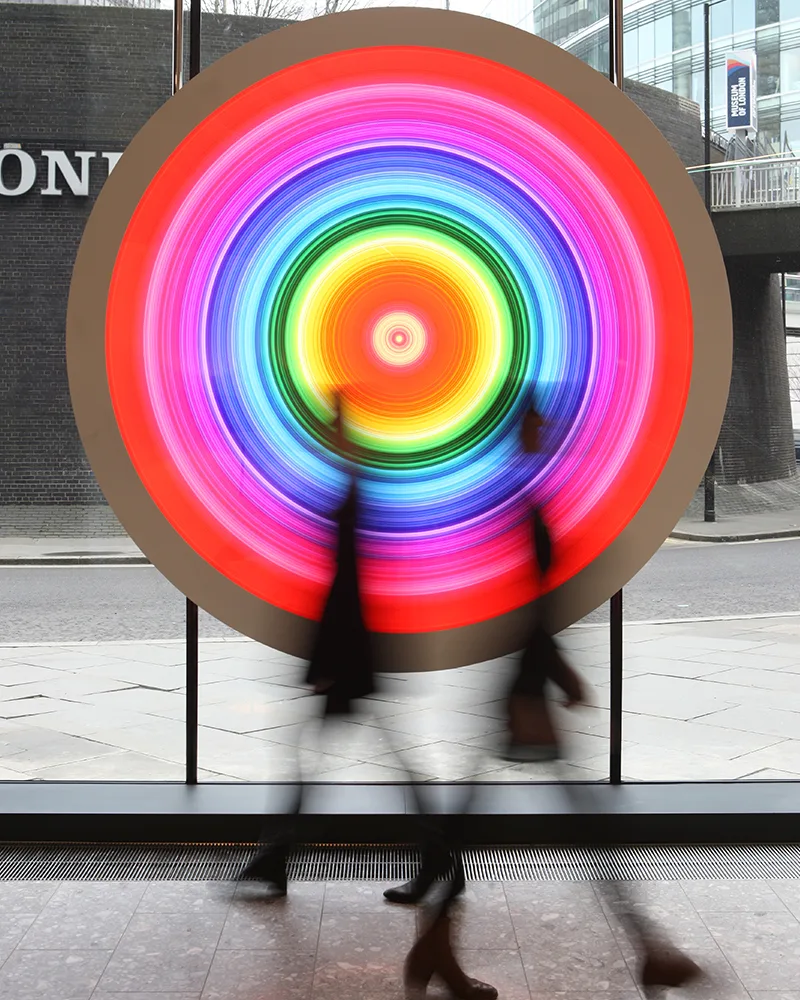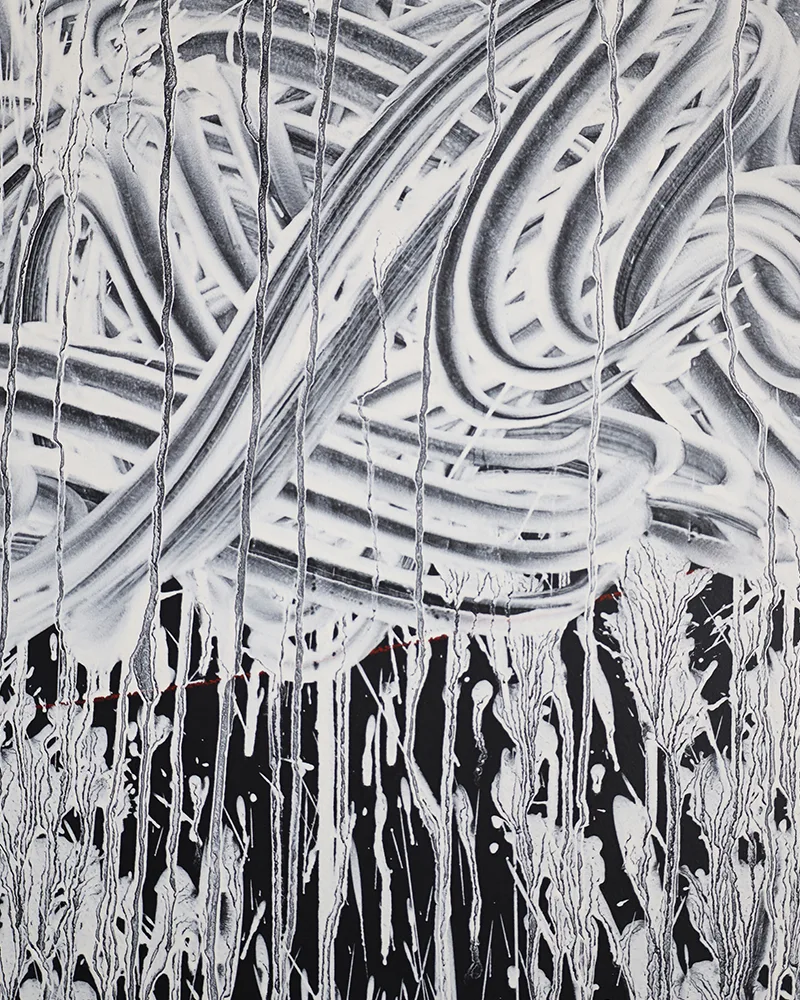
Centre Point
Various artists
London is in a constant flux, gaining and losing meaning, buildings and areas reinventing themselves, regaining a sense of purpose, the ebb and flow of people, economies, shaped by changing technologies, and how we interact with the world around us. The geographical location of Centre Point has been a witness to all of these trajectories colliding, which has now found a new path of reinvention.
To capture this in the language of art is critical, with any permanent artwork, you cannot only consider the aesthetic, context is vital. The artwork has to have a reason, a rich narrative to gives it the longevity it deserves, we will then learn to respect the creation, and congratulate the creator.
More information
Read
Kevin Francis Gray
Head of Óengus Maquette, 2018
Statuario marble
71 cm x 26 cm x 32 cm approx 90 kg
In Ancient Irish mythology, Óengus is said to be the god of love, youth and poetic inspiration. Among the many legends surrounding him and his origins, the most famous is that of his love story with Cáer. The vision of Cáer (goddess of dreams and prophecy) comes to Óengus in his sleep and he falls madly in love with her. He searches every kingdom of Ireland – both mortal and godly – in search of her. Finally, he is led to the lake of the Dragon’s Mouth, where Cáer, cursed to take the form of a swan, is chained with 149 other cursed damsels and goddesses. Her captor agrees to release Cáer to Óengus only if he is able to recognise her in swan form. Sensing a trap, Óengus instead transforms himself into a swan and escapes with his beloved, flying away to safety for eternity.
Kevin’s mark making into the marble has a wonderful connection as it mimics the presence of the hand but made by hand and connects with the hand marks of Richard Long’s mud painting.
Keita Miyazaki
Vanitas: Forest, 2018
Car light, steel, glass, paper, ceramic, sew, wood, sand and oil paint
122x102x40cm
Reutilizing discarded elements as extensions of our ubiquitous consumerist present to question contemporary society’s obsessive materialistic drive, Keita Miyazaki – living between London and Tokyo – amalgamates both Western and Oriental formal concerns and aesthetic influences.
Miyazaki’s latest series entitled Vanitas, references the Vanitas of seventeenth century Dutch painting inspiring profound philosophical meditations on the transience and vanity of human existence. Miyazaki here reinterprets historical references making use of his welding ability to create metal wall mounted cases with glass vitrines featuring poetic, melancholic assemblages of found objects, memorabilia and hand-crafted origami, mutually echoing the fragility of human nature and the distinction between individual and collective labor. Whereas the original works relied on a shaft of light penetrating the darkness as a metaphor for the ‘divine’, a fully visible illuminated car headlight in the upper part of the case is Miyazaki’s contemporary take on the tradition.
In response to the redundancy of our supposedly coveted industrial society, the fascination with ruins and the beauty inherent within them has informed Miyazaki’s whole practice from recuperating the relics of a defunct age to the insertion of found objects in his ‘Vanitas’ vitrines.
The artwork connects with the London skyline the red lights echoing in the streets below you, in the peripheral, The British Museum can be seen, where objects found in vitrines are displayed and the word “Vanitas” is an everyday word.
Jeppe Hein
Wishes for two, 2017
Glass fibre reinforced plastic, chrome lacquer (medium blueprint and medium orange), magnet, strings (white smoke)
2 balloons, each 40 x 26 x26 cm; 15 3/4 x 10 1/4 x 10 1/4 in
Two blue and orange-mirrored balloons hang from the ceiling above people’s heads, subtly moving with the circulation of air. Due to their shape and reflective surface, the balloons produce a distorted perspective of the surrounding space, similar to a fish-eye view. Only the roof seems to prevent the balloons from soaring into the air and expanding the reflection to the infinite.
Richard Wentworth
Seen Unseens, 2017
Birds Nest with mirrors
Richard Wentworth piece, called Seen Unseens, is an ornithological ready-made artwork, it is a real bird’s nest – empty, but with a mirror over it so you can see it for yourself, as if the bird nested to be at the top of the tower whilst the building was exposed to the outside during the refurbishment.
It is also a moment to allow to reflect on the intelligence of birds and the inappropriateness the phrase “bird brain”.
Richard Wentworth writes
Looking and seeing are very different. The things that strike us most strongly are often seen out of the corner of the eye- they connect us up to the ‘memorable’, the space where we fall in love.
Happening upon an abandoned bird’s nest shares the energy of childhood curiosity.
Seen Unseens celebrates the yearning of all human gazing.
In cathedrals, height is employed as a metaphor for imagination.
We like the ‘un-go-able’.
We strain to see.
Bram Bogart
Noir, 2008
Mixed Media
75 x 88cm
Bram Bogart was dedicated to exploring the materiality of paint. He challenged and blurred traditional notions of painting and sculpture, building three dimensional paintings comprised of mostly natural ingredients including various oils, glue, pigment, powdered chalk, and water. This investigation into the sculptural possibilities of paint led him to use increasingly thick layers, to create nuanced textural surface, exploring balance and disorder, tension and calm, two- and three-dimensionality, colour and structure.
In a concrete brutalist building the artwork titled Noir sits comfortably with its concrete like qualities but has a sensual liquid form.
Pascal Convert
Coeur de verre #6 2018
Book crystallization, purple glass with gold, yellow silver stain, plaster.
465 x 22.5 x 12cm
Recipe for making crystallised fragments of a library.
‘Find some unwanted old books, preferably 18th-century, leather-bound and made with real paper…
Prepare a cast of each book. Pour the refractory plaster around each book, immersing it completely. Remove the outer layer as soon as the plaster has set; pierce the holes for the vents and the feeder; place in the oven; position the pouring device above the casts; steam the casts at 120°C until they stop emitting any vapour; cook until the temperature is 550°C and observe the combustion process, which should include small flames emerging from the vents; increase the oven temperature gradually to 900°C.
When this temperature is reached, start to pour in the glass; stop pouring once the glass comes out of the vents, which might take about 20 hours; cool to 580°C and stay at that temperature for at least 48 hours; cool further, slowly, for ten days or so, down to room temperature.
Take out of the oven and remove the cast very carefully; remove the vents and feeder; if necessary extract any ashes from the interior if you can access it; pumice and apply a finish to the surface of the crystallised books.’
Steaming, cooking, and assessing the combustion, increasing the oven temperature to 900°C: this recipe for a ‘lost book’ crystallisation echoes the worst tortures inflicted on martyrs burnt at the stake. Via the mysterious process of transubstantiation, and after ten days of preparation, a phoenix has returned from the underworld in the form of a crystal book bearing the memory of the past’s future.
The persistence of the past by transmutation and crystallisation reminds the libraries burnt worldwide by totalitarian regimes: it is impossible not to think of the Nazi autodafés, the burning of so many libraries during the wars, from that of Leuven to that of Sarajevo. Binding debris remain trapped in the material, such as insects in amber.
As well as the setting sun retains the incandescence of the day that has just passed, the red colour that irrigates these books, which have been made incorruptible by crystallization, still palpitates with the secrets of which they were the luminous carriers. Hearts searched, devastated, serious and silent, they are the trace of lost loves, points of no return. Strange nostalgia: to (re)live in the face of eternal sunsets.
Richard Wentworth
Équilibre 2016–18
In Équilibre, installed at Centre Point’s Club Lounge, we are reminded of our need of equilibrium in daily life, in a manner similar to Dutch genre painting of domestic scenes, or the visual precariousness of Spanish vanitas work. Hanging objects of the everyday world may suggest pendulums that swing in the air, but these humble items are tethered – via taut cable – to boating cleats. Referencing maritime London, Wentworth sourced the cleats from the nearby chandler Arthur Beale, who has been trading in London for 400 years. Indeed a vast tide of commerce and industry has long flowed through, over and around this area in which Centre Point is an island, and today it is almost literally awash with designed objects of every description for the home and office. By contrast, Wentworth’s functional objects are beyond style, their form/structure dictated by their use, and their common theme is materiality. Iron, clay, concrete, stone, paper, glass, card, fibre – tethered to a ship, some would sink, some would float. Virtually all are serial objects – manufactured en masse – each removed from the utilitarian flow and halted in Wentworth’s fragile moorings, poised in equilibrium between known and unknown, familiar and strange. Net-like bindings around inside-out books trap hives of buzzing words and recall the honeycombed exterior of Centre Point Tower. Chance juxtapositions highlight the disjunctions between words, as ‘innovator’ rapidly slides into ‘innuendo’ and ‘innumerable’, ‘impracticable’ becomes and ‘imprecation’, and implements – both linguistic and material – start to impinge.
Constructed from precast industrial concrete (itself the product of oceanic grindings of rocks and sand recalled on a smaller scale by Wentworth’s pestle-less mortars), the tower rises vertically in the lateral world of staying afloat, where equilibrium is hard to maintain. Outside she is buffeted by elements of all kinds; in her laminated interior Wentworth’s objects keep her ship-shape.
Équilibre detains us, encouraging us to contemplate the fabric of our surroundings.
